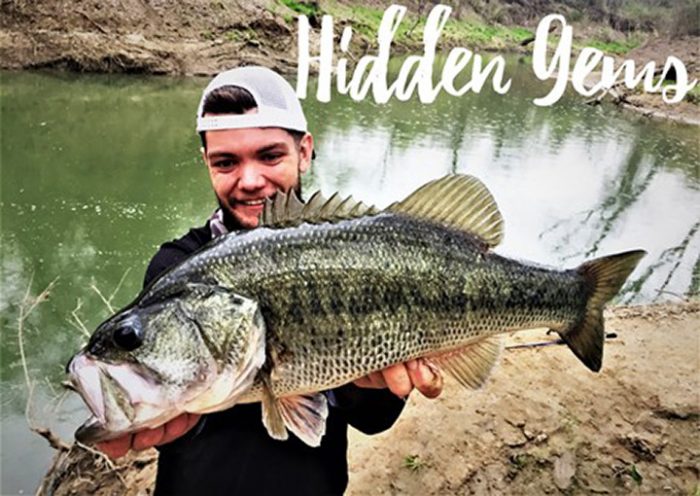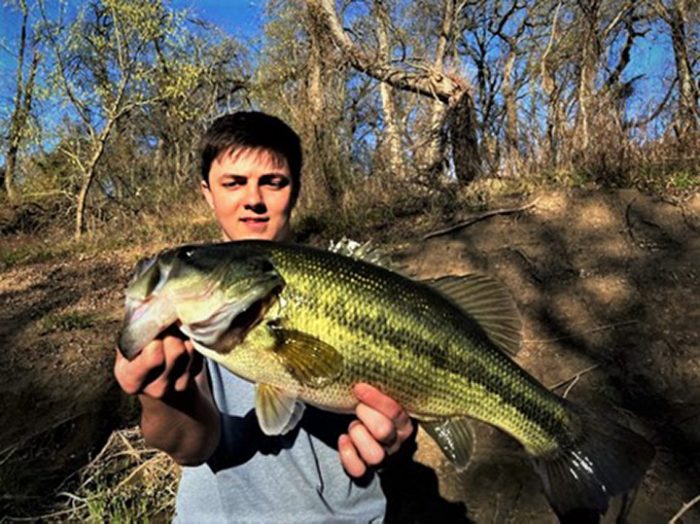Hidden Fishing Gems: Large Mouth Bass Part 1
One of the most common questions anglers ask each other when sharing fishing stories and pictures is, “Where did you catch that?” Anglers are always looking for a new honey hole where they can try their luck. What they may not be aware of is how many honey holes are right under their noses. In this article, I will dive deeper into finding these hidden gems for the nation’s most popular style of fishing: bank fishing for largemouth bass.
Over the last six years, I’ve familiarized myself with fishing in the Dallas/Fort Worth area of Texas. There are plenty of publicly accessible ponds and creeks that provide excellent opportunities to target largemouths all year round. You will, however, run into plenty of fellow anglers with the same quarry as you. There’s nothing wrong with that; however, I think I speak for more than a couple of anglers when I say I would prefer a spot with limited angler traffic and plenty of quality bass. It simply means you have to find spots that hold both quantity and quality largemouth bass but are also a bit harder to find than your average local park pond or golf club creek.
By far, the most successful fishing spots for me have been creeks that open into large bodies of water. Think about tributaries to large river systems like the Red River or the Trinity River here in Texas, but also creeks that are part of large lake systems. One of the main reasons these creek systems have proven to be outstanding fishing spots is for the simple fact that bass have the opportunity to move to their preferred water depth without having to travel too far from the creek itself. Most creek mouths see a rapid depth transition between the mouth of the creek and the main body of the lake or river system. During the colder periods of the year, bass, like most other fish, will move to deeper sections of the lake or river as they look for water with a more stable temperature. When the water temperatures start rising in early spring, those fish will move to shallower water that provides forage and spawning areas.
Getting to these creeks means you have to do some necessary hiking. “Do the miles, get the smiles” holds true on this one. There are a couple of creeks I’ve fished over the last couple of years where I have yet to see a fellow angler, yet double-digit totals are not uncommon within the first hour of fishing. This brings me to another important point: timing is everything. Understanding when a particular spot might be straight-up fire or downright disastrous is a product of repetition. Basically, keep going until you’ve experienced multiple occasions of success and failure. It’s these experiences that will help you understand your new spot and help you with the timing of your next fishing session. In addition, you will be able to apply this knowledge to other fishing spots.
Obviously, timing is dependent on location. Here in Central North Texas, I’ve found that late February or early March is a great time to look for new spots; this may be earlier or later depending on where you live if you are in the United States. Generally speaking, when temperatures start to increase, largemouth bass start moving to shallower water. I’ve heard many anglers refer to the “magic 65 degrees Fahrenheit”, but I’ve found that bass can be caught well before the water temperature reaches that number, as long as the water temperature is continuously and gradually increasing from its coldest temperatures. Case in point: when Texas got hit with a terrible cold snap this year, we were able to catch several largemouth bass in two feet of water, only a couple of days after this year’s lowest recorded temperatures. The water temperature was only in the high 40s Fahrenheit, yet a decent school of largemouth bass was willing to move out of deep water into a shallow creek.
Why? Because air temperatures had stabilized, the weather was improving, and the shallow water in the creek warmed up much faster than the deep water of the main lake where the fish lived previously! A funny thing that keeps occurring is that the first schools of bass in the creeks we fish tend to be smaller in size. We will often have a bunch of small spotted bass mixed in with the first school of largemouths. With this knowledge, we make tackle adjustments. Small, slow-moving lures and light tackle generally provide us with the best chances. Shortly after these schools of smaller bass have moved up, larger bass will follow. Tackle adjustments are made accordingly again.
In the next part of this article, we will discuss tactics to find new spots, fishing techniques, and tackle to suit. Thanks for reading!
Born and raised in the Netherlands, Sebas moved to Australia for college and work and now is fortunate enough to call the great United States of America home. Ever since he can remember, he has been exceptionally passionate about the outdoors, sport fishing in particular. While in college in Australia, he held a job as a fishing guide and deckhand for a sportfishing charter operation on the Great Barrier Reef; an experience he will never forget. Sebas has been published in various publications for Dutch, Australian, and US-based magazines and online platforms and runs a Youtube channel with sport fishing and lure building content as well. Now that he has been living in the United States for six years, he has been able to pick up a new passion in the form of hunting. Hunting Nilgai on the King Ranch and Whitetail along the Red River has been a tremendous experience and is hoping for more to come!





